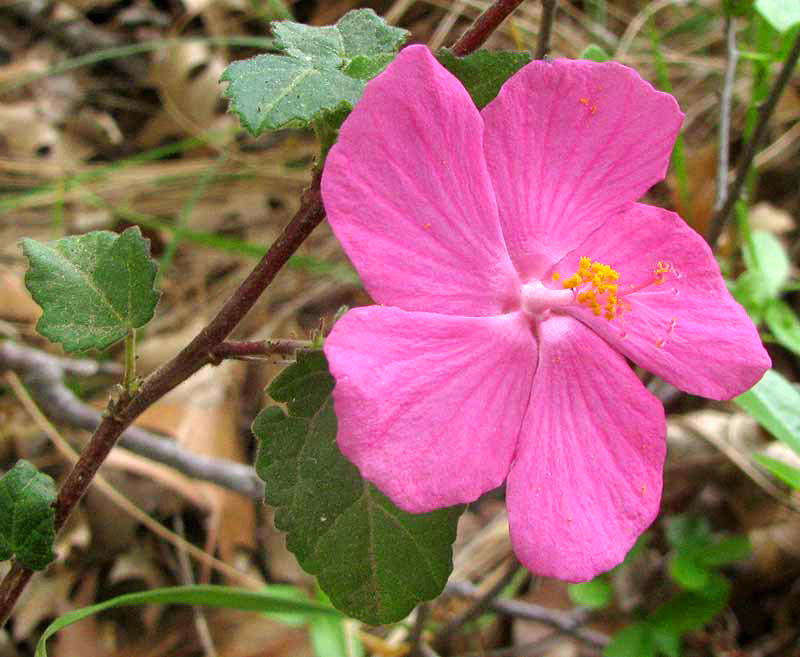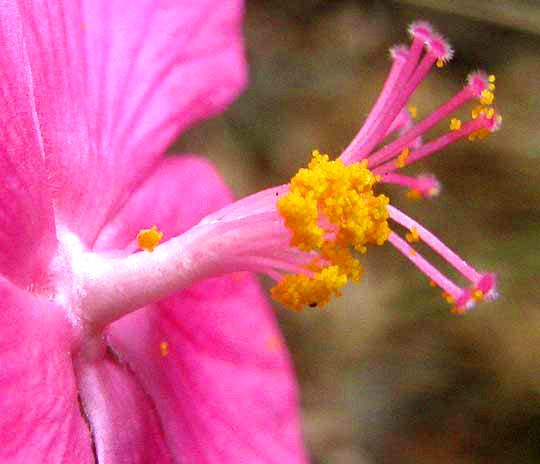Excerpts from Jim Conrad's
Naturalist Newsletter

from the April 7, 2013 Newsletter issued from the Frio Canyon Nature Education Center in northern Uvalde County, southwestern Texas, on the southern border of the Edwards Plateau; elevation ~1750m (~5750 ft); N29.62°, W99.86°; USA
ROSE MALLOW FLOWERING
In a deeply shaded, somewhat weedy spot beneath trees on a low ledge next to the Frio River there was such a large, bright spot of gaudy pinkness that at first I didn't look at it, thinking it must be somebody's trash. But Fred did look closely, and he called me back to see the pretty flower, which you can see above.
A close look at the 1½-inch-wide (4cm) blossom's center instantly told me which family the plant belonged to. See if you can figure it out below:

With so many yellow, pollen-producing anthers atop slender, pale filaments that join at their bases into a cylinder surrounding the extended female parts, what could it be but a member of the enormous Hibiscus Family? It's not a hibiscus itself, however, because the pale column arising from the corolla's center is slightly askew relative to the corolla disc, which is something hibiscus flowers don't do. Also, the flower's ten stigmas issuing above the clustered stamens are asymmetrically grouped, as are the stamens themselves. There's even one stamen arising at the base of the column.
These and other field marks identify this as a Rose Mallow, also commonly known as Rock Rosemallow, Texas Rockrose, Texas Swampmallow, Wright Pavonia, and other similar names. It's PAVONIA LASIOPETALA, endemic to just a few counties along the southern edge of the Edwards Plateau in southern Texas, and across the border into northern Mexico. Its habitat is described as rocky woods and slopes on shallow, dry soil atop limestone.
Rose Mallow, despite being of such limited natural distribution, is so pretty and long flowering -- throughout nearly all the warmer months -- that often it's offered at nurseries and grown in gardens, with one of its virtues being that it's extremely drought tolerant.